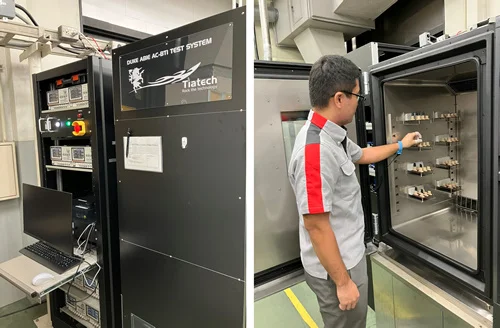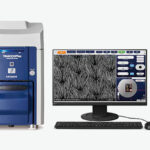ASIA ELECTRONICS INDUSTRYYOUR WINDOW TO SMART MANUFACTURING
OKI’s New Service Ensures Reliability of SiC Power IC
OKI Engineering Co., Ltd. (OEG), a provider of reliability evaluation and environmental protection technical services for the OKI Group, will launch the AC-BTI (Note 1) Test Service. Primarily, this service aims to evaluate the degradation modes inherent in silicon carbide (SiC) power semiconductors (Note 2) installed in automotive and industrial equipment.

Mainly, OEG provides services to SiC power semiconductor manufacturers. Also, it caters companies that design products using SiC power semiconductors, and support device development, device selection, and product design. Through this service, the company aims to achieve annual sales of 100 million yen by FY2026.
Power semiconductors are used in power control and conversion applications in a wide range of markets. Among the most common are electric vehicles and industrial equipment. Their performance is critical to achieving carbon neutrality. As a result, SiC power semiconductors, which have high breakdown voltage and low loss characteristics superior to conventional silicon (Si) power semiconductors, are rapidly spreading.
However, SiC power semiconductors have a unique degradation mode called AC-BTI. It is a common knowledge that the threshold voltage (Note 3) fluctuates due to long-term switching operation (repeated On/Off). Basically, AC-BTI testing is important because fluctuations in the threshold voltage lead to increased power loss. However, this test standard has only recently been established, and the provision of AC-BTI testing services has not progressed.
Therefore, OEG has developed an evaluation device that complies with international standards for reliability testing (Note 4) in cooperation with test equipment manufacturers. Specifically, it provides an AC-BTI test service that evaluates the degradation mode specific to SiC power semiconductors. This service allows for fine-tuning of temperature and stress application conditions. At the same time, it is possible to continuously test up to 48 samples without removing them from the test board, making it a highly reproducible test service with a short delivery time. By combining it with conventional evaluation services, OEG supports its customers’ reliability in their devices, component selection, and product design, and contribute to the safer use of SiC power semiconductors.
In the future, OEG will expand its lineup of reliability testing, evaluation, and analysis for SiC power semiconductors. Through the provision of a wide range of services, we will contribute to the achievement of carbon neutrality.
Terminology:
Note 1: SiC (Silicon Carbide) power semiconductors
It is a compound semiconductor of silicon (Si) and carbon (C), and has the characteristics of high temperature resistance, high withstand voltage, high thermal conductivity, and low loss compared to Si.
Note 2: AC-BTI (Alternating Current – Bias Temperature Instability)
A phenomenon of characteristic fluctuations such as threshold voltage when AC stress is applied to the gate terminals in a low-temperature ~ high-temperature environment. This is a characteristic variation inherent in SiC power semiconductors that is not seen in Si power semiconductors.
Note 3: Threshold voltage
The gate terminal voltage required for the transistor to turn On.
Note 4: International standard for reliability testing
JEITA EDR-4713 Annex E, JEDEC JEP195, AQG 324
This is an online translation of a Japanese press release with slight editing made by Dempa.
-26 September 2024-




